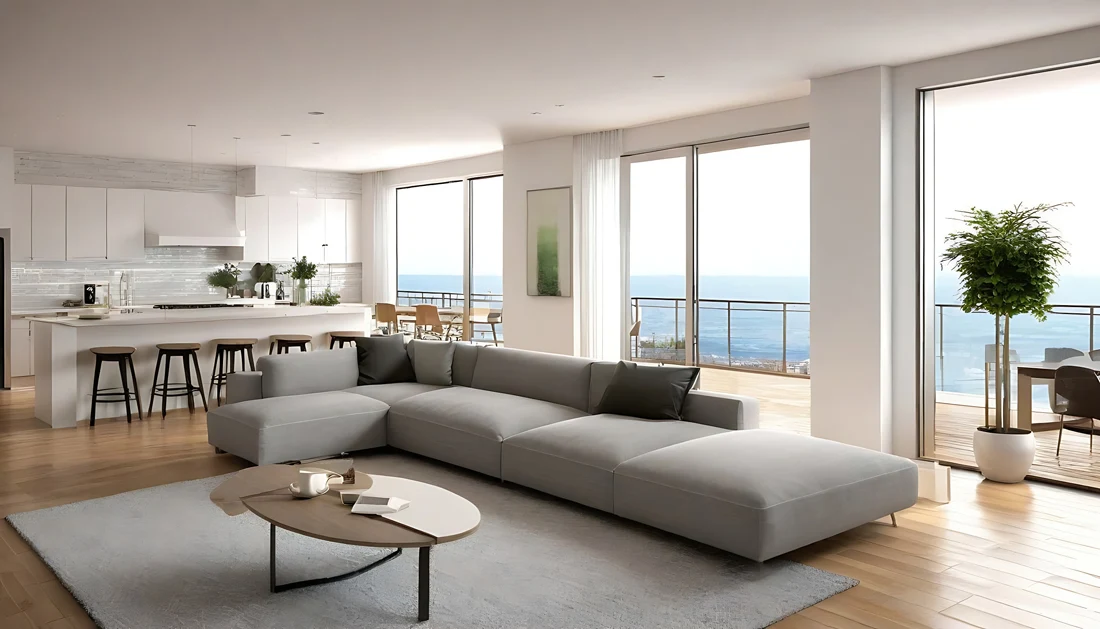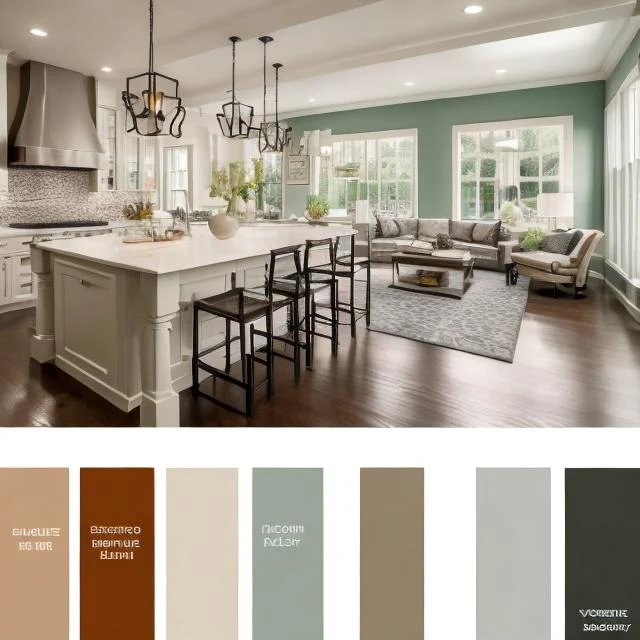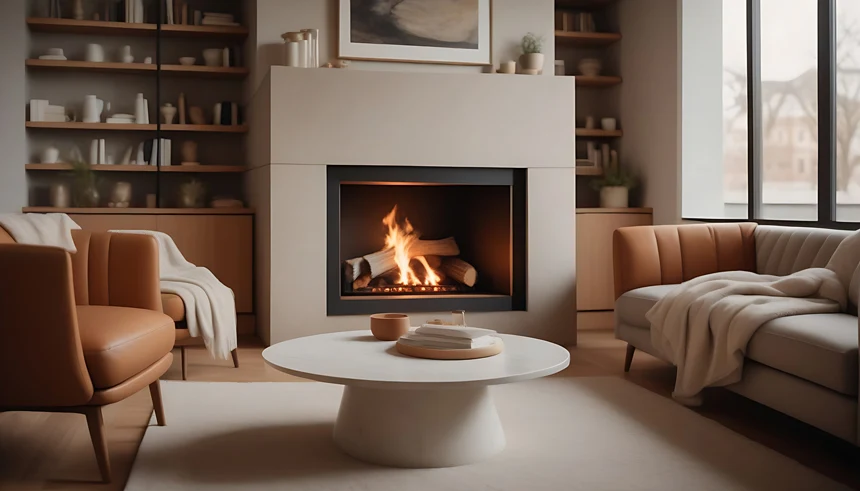Why are Open Floor Plans being so popular?
Open floor plans have become progressively well-known in present-day homes, offering a feeling of spaciousness and opportunity. However, without the right plan and design, open floor plans can feel cluttered and turbulent.
In the realm of modern interior design, open floor plans stand as a demonstration of the combination of usefulness and style. Their popularity keeps on taking off as homeowners look for flexible, airy spaces that work with consistent collaborations and multifunctional living.
Assuming that you're struggling to make the most of your open floor plan and need to make a space that is both spacious and practical, you're in luck! In this article, we'll share 7 fundamental keys to expanding the open concept floor plans and providing you with interior design tips that will change your home into a stylish and agreeable oasis.
So, let's dive in and unlock the potential of your open-plan layout, and unveil some expert tips and tricks to make the most of your available space.
 |
| An Open-Plan Living, Kitchen, and Dining Space. AI-Generated Image |
What is an open-plan layout?
The open floor plans wipe out obstructions, making a unified space that incorporates numerous areas like the kitchen, dining, and living rooms. Their unrestricted layout fosters connectivity, allowing natural light to permeate and enhancing the sense of spaciousness. By eliminating walls and partitions, these plans create a canvas for personalized creativity while optimizing the available square footage. Learn more >
7 Fundamental Keys to Maximize Open Floor Plans Size, Making Them More Spacious and Functional
Here are a few essential tips that will enhance your open floor plan's extensive size, which brings about better functionality:
1- Zone with Purpose
Use furniture plans and area rugs to portray particular zones and areas inside the open space. For example, a rug can characterize the lounge region, while a decisively positioned couch can quietly isolate the dining space. Read more >
2- Harmonious Color Palette
A harmonious palette is a concept deeply rooted in the world of art and design, representing a delicate balance of colors that work seamlessly together to evoke a sense of unity and aesthetic appeal. This notion extends beyond the realms of painting and encompasses various fields such as interior design, fashion, digital media, and more.
In this exploration, we delve into the significance of a harmonious palette, its principles, and its application across the interior design disciplines. Keep a strong color scheme all through the space to create coherence. Neutral tones or a correlative color variety range make visual congruity, complementing the feeling of openness.
The harmonious palette serves as a powerful tool across the spectrum of creative endeavors, offering a pathway to visual satisfaction, emotional resonance, and effective communication.
 |
| Applying a harmonious color palette is key for a successful open floor plan project. AI-Generated Image. |
By understanding the principles of color harmony and exploring their applications, artists, designers, and creators can unlock the full potential of a balanced and cohesive visual experience. Whether on a canvas, in a room, or within digital spaces, the art of harmonious palettes continues to captivate and inspire. Read more >
3- Strategic Furniture Selection
The choice of furniture plays a pivotal role in shaping the character and functionality of any living space; Opt for multifunctional furniture pieces to optimize space utility. Items like nesting tables, ottomans with hidden storage, or modular sofas serve dual purposes without cluttering the area.
Strategic furniture selection involves more than just picking aesthetically pleasing pieces; it requires a thoughtful approach to enhance the overall design and usability of your home. It begins with a keen understanding of your available space.
Choose furniture that complements the size and layout of the room. Go for multifunctional pieces that serve dual purposes, such as a sofa bed for guest accommodations or a coffee table with hidden storage to minimize clutter.
Additionally, choose furniture that adapts to changing needs and functions. Modular furniture, such as sectional sofas with movable components or modular shelving units, offers flexibility for rearranging the layout. This adaptability ensures that your furniture remains relevant as your lifestyle evolves. Learn more >
4- Defined Focal Points
It is optional to establish a focal point in each zone to anchor the space, but at least one. It could be a fireplace, a statement piece of furniture, or artwork that draws the eye and gives each area its distinct charm. Open floor plans have become increasingly popular in modern architecture and interior design, emphasizing connectivity and a sense of spaciousness. However, amidst the openness, the challenge arises of creating defined focal points that serve both functional and aesthetic purposes.
This discussion explores the importance of incorporating defined focal points in open floor plans, their role in enhancing the overall design, and strategies to achieve a harmonious balance between connectivity and purposeful spaces. It plays a crucial role in enhancing the functionality and aesthetics of open floor plans.
By carefully considering furniture arrangement, incorporating statement pieces, and balancing connectivity with purposeful design, homeowners and designers can create spaces that not only promote interaction but also provide a sense of identity and direction. In the dynamic landscape of open floor plans, the thoughtful integration of defined focal points transforms vast openness into inviting and purposeful environments.
 |
| The focal points are important elements to optimize open floor plans. AI-Generated Image. |
5- Lighting Dynamics
In the dynamic world of open floor plans, lighting takes on a pivotal role in shaping the character of a space. By embracing the challenges and opportunities presented by expansive, interconnected interiors, designers can create environments that seamlessly blend functionality with ambiance. Through a fusion of artistic sensibility and technological innovation, lighting dynamics in open floor plans contribute to a harmonious and visually engaging living or working experience.
The design trend towards open floor layouts has revolutionized the way we perceive and utilize interior spaces. The absence of traditional room divisions creates a canvas of possibilities, but it also introduces unique challenges for effective lighting. Lighting dynamics in open floor plans go beyond mere functionality, extending into the realms of ambiance, visual hierarchy, and spatial definition.
This exploration involves a thoughtful combination of artistic design principles and the strategic application of lighting technology. Incorporate various lighting sources to add depth and ambiance. Blend natural light with pendant lights, floor lamps, or wall sconces to create a layered, inviting atmosphere.
6- Textural Elements
Introduce textures through textiles, upholstery, and decor to add depth and tactile appeal. Mix materials like wood, metal, and fabric to infuse character into the space.
7- Green Touches
Bring the outdoors in by incorporating indoor plants. They not only add a touch of freshness but also contribute to a vibrant ambiance. Read more >
Some Advantages of Open Floor Plans in Interior Design; Is it worth the effort?
Open floor plans offer a large number of benefits, making them a profoundly beneficial choice in modern interior design. They improve the flow of natural light, streamline space, and encourage a feeling of fellowship, making them highly pursued in modern homes. Their flexibility accommodates different plan styles, mirroring a contemporary and versatile living climate.
Here are some of their key advantages:
1- Enhanced Social Interaction — Open floor layouts work with consistent collaboration among relatives and visitors. Without walls and boundaries, correspondence streams openly, encouraging a feeling of fellowship and networking.
2- Increased Natural Light — With fewer deterrents, regular light can infiltrate the whole space, making a more brilliant and really welcoming climate. This not only diminishes the requirement for counterfeit lighting during the day but also adds to a more lively climate.
3- Sense of Spaciousness — Eliminating walls and segments makes a visual deception of a bigger space. Open designs frequently cause homes to feel more extensive, even in more modest areas, offering a feeling of breeziness and opportunity.
4- Versatility in Design and Functionality — Open spaces give a flexible material for interior design. Homeowners can modify and adjust furniture, outline zones, and adjust the space to effortlessly suit their evolving needs.
5- Family Connectivity — Particularly beneficial for families, open floor plans allow parents to keep an eye on children while playing in different areas of the home, while still being engaged in other activities. This promotes a sense of security and connection.
6- Engaging Straightforwardness — Facilitating social affairs or gatherings turns out to be more charming in an open floor plan. The layout encourages fluid movement, allowing hosts to entertain guests without feeling isolated in the kitchen while preparing food.
7- More Enhanced Resale Value — Open floor concepts often appeal to a broader range of prospective buyers. Their modern and versatile nature can potentially increase the resale value of a home. Read more >
8- Adaptability for Aging in Place — As homeowners age, open floor plans offer simpler versatility and availability. The absence of barriers and steps can make navigation simpler for individuals with mobility challenges.
9- Maximized Use of Space — Additionally, they can eliminate wasted space that might be allocated to hallways or unused rooms, allowing for more efficient utilization of square footage.
10- Integration with Outdoor Spaces — These layouts often seamlessly connect indoor and outdoor areas. Sliding doors or large windows can merge the interior with patios or gardens, creating a harmonious flow between spaces.
Generally, open floor plans promote a modern, inclusive, and flexible way of living, enhancing both the aesthetics and functionality of a home.
Final Considerations
All in all, open floor plans act as a canvas for personalized expression in interior design, offering a harmonious blend of functionality and aesthetics. By implementing these expert tips and tricks, homeowners can unlock the full potential of these spaces, creating inviting, multifunctional areas that redefine the art of living.
They are not simply compositional formats; they exemplify a way of life that focuses on network, adaptability, and solace, making them a persevering pattern in the domain of interior design.
